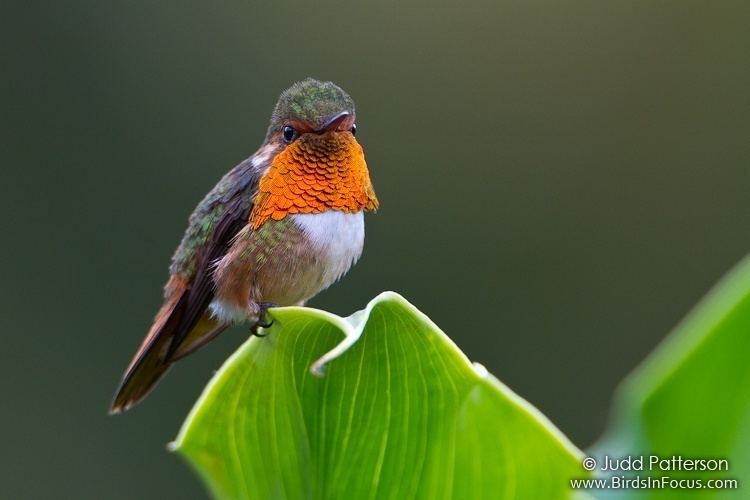Kingdom Animalia Order Trochiliformes Genus Selasphorus Higher classification Selasphorus | Phylum Chordata Family Trochilidae Scientific name Selasphorus scintilla Rank Species | |
 | ||
Similar Bird, Hummingbird, Selasphorus, Volcano hummingbird, White‑throated mountaingem | ||
Scintillant hummingbird
The scintillant hummingbird (Selasphorus scintilla) is the smallest hummingbird within its range, which includes only the mountains of Costa Rica and western Panama.
Contents

This tiny bird inhabits brushy forest edges, coffee plantations and sometimes gardens at altitudes from 900–2,000 m (3,000–6,600 ft), and up to 2,500 m (8,200 ft) when not breeding. It is only 6.5–8 cm (2.6–3.1 in) long, including the bill. The male weighs 2 g (0.071 oz) and the female 2.3 g (0.081 oz). This is one of the smallest birds in existence, marginally larger than the bee hummingbird. The black bill is short and straight.

The adult male scintillant hummingbird has bronze-green upperparts and a rufous and black-striped tail. The throat is brilliant red, separated from the cinnamon underparts by a white neck band. The female is similar, but her throat is buff with small green spots and the flanks are richer rufous. Young birds resemble the female but have rufous fringes to the upperpart plumage.
The female scintillant hummingbird is entirely responsible for nest building and incubation. She lays two white eggs in her tiny plant-floss cup nest 1–4 m (3 ft 3 in–13 ft 1 in) high in a scrub. Incubation takes 15–19 days, and fledging another 20–26.
The food of this species is nectar, taken from a variety of small flowers, including Salvia and species normally pollinated by insects. Like other hummingbirds it also takes some small insects as an essential source of protein. In the breeding season, scintillant hummingbird males perch conspicuously in open areas with Salvia and defend their feeding territories aggressively with diving displays. The call of this rather quiet species is a liquid tsip.
This species is replaced at higher elevations by its relative, the volcano hummingbird, Selasphorus flammula.
